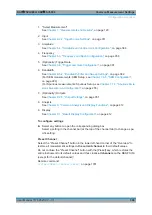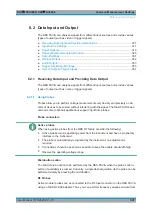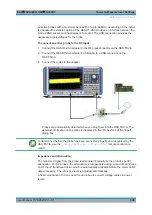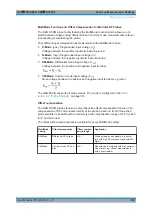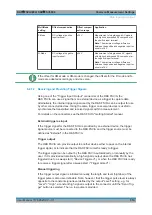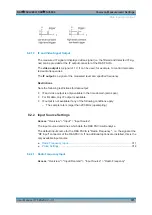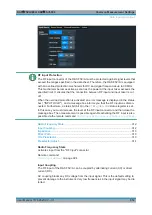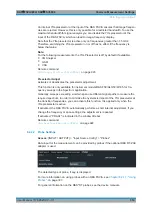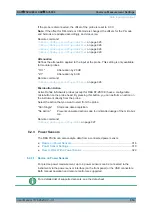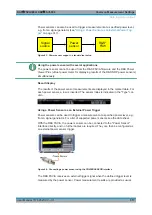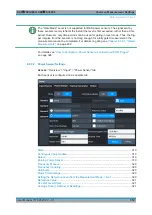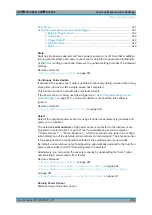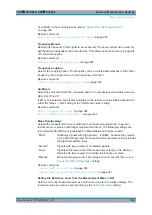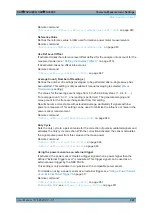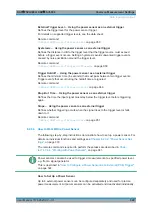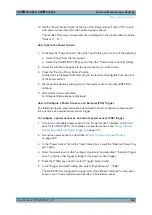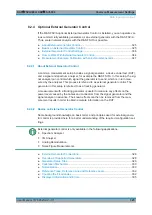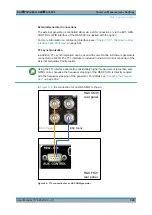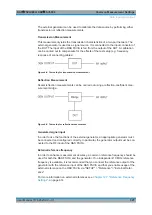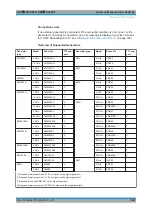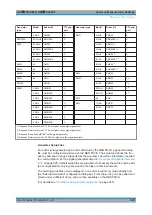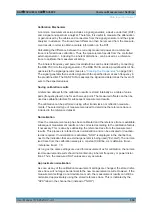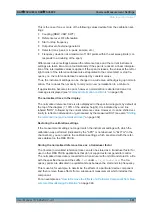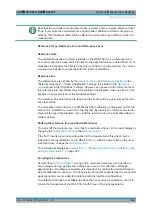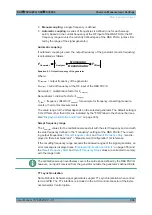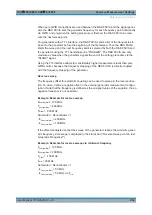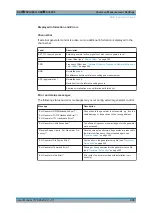
Common Measurement Settings
R&S
®
FSVA3000/ R&S
®
FSV3000
320
User Manual 1178.8520.02 ─ 01
For details on the zeroing process refer to
"How to Zero the Power Sensor"
Remote command:
CALibration:PMETer<p>:ZERO:AUTO ONCE
Frequency Manual
Defines the frequency of the signal to be measured. The power sensor has a memory
with frequency-dependent correction factors. This allows extreme accuracy for signals
of a known frequency.
Remote command:
Frequency Coupling
Selects the coupling option. The frequency can be coupled automatically to the center
frequency of the instrument or to the frequency of marker 1.
Remote command:
[SENSe:]PMETer<p>:FREQuency:LINK
Unit/Scale
Selects the unit with which the measured power is to be displayed. Available units are
dBm, dB, W and %.
If dB or % is selected, the display is relative to the reference value that is defined with
either the "Meas -> Ref" setting or the "Reference Value" setting.
Remote command:
Meas Time/Average
Selects the measurement time or switches to manual averaging mode. In general,
results are more precise with longer measurement times. The following settings are
recommended for different signal types to obtain stable and precise results:
"Short"
Stationary signals with high power (> -40dBm), because they require
only a short measurement time and short measurement time provides
the highest repetition rates.
"Normal"
Signals with lower power or modulated signals
"Long"
Signals at the lower end of the measurement range (<-50 dBm) or
Signals with lower power to minimize the influence of noise
"Manual"
Manual averaging mode. The average count is set with the
Remote command:
[SENSe:]PMETer<p>:MTIMe:AVERage[:STATe]
Setting the Reference Level from the Measurement Meas -> Ref
Sets the currently measured power as a reference value for the relative display. The
reference value can also be set manually via the
setting.
Data Input and Output

